|
Here are just a few of this week's stories from the Michigan Department of Natural Resources:?
See other news releases, Showcasing the DNR stories, photos and other resources at Michigan.gov/DNRPressRoom.
PHOTO FOLDER: Larger, higher-res versions of some of the images used in this email, and others, are available in this folder.
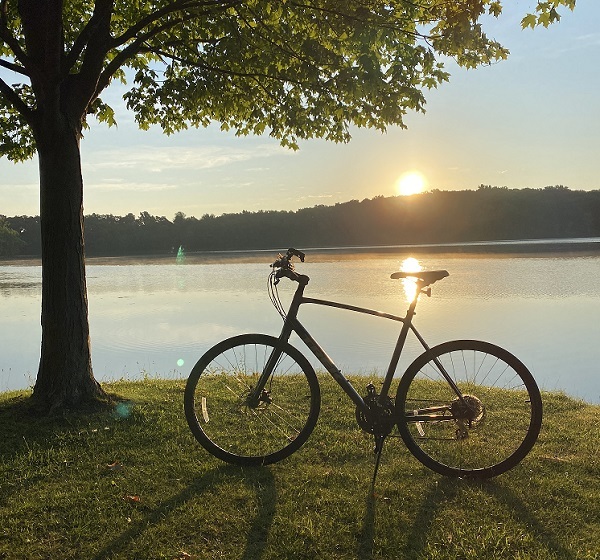 Want to see more pictures like this, taken by Michigan state parks photo ambassador Aaron Burden?at Seven Lakes State Park in Oakland County? Visit?Instagram.com/MiStateParks?to explore photos and learn more about the photo ambassadors! For more on the photo ambassador program, call?Stephanie Yancer?at 989-274-6182.
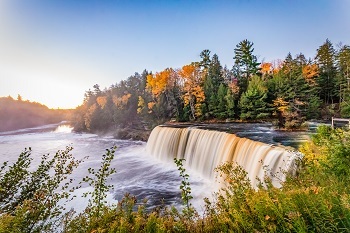
Like you needed another reason to visit one of the most beautiful places on Earth, Tahquamenon Falls State Park ? according to experts and visitors ? is among the country?s best destinations for viewing the entire spectrum of fall color.
The popular state park placed No. 2 in the Best Destination for Fall Foliage category in the 2023 USA TODAY 10Best Readers' Choice travel award contest. Nominees were chosen by a panel that included editors from USA TODAY and 10Best.com, expert contributors and Gannett sources. The public could then vote online for one nominee per category, per day; results were announced Friday.
Located in Michigan?s Upper Peninsula in a town called (what else?) Paradise, Tahquamenon Falls State Park is best known for its showcase waterfalls. The Upper Falls is one of the largest waterfalls east of the Mississippi River, and the Lower Falls, just 4 miles downstream, is a series of five smaller waterfalls that cascade around the island.
View the waterfalls and vibrant fall foliage from the banks of the Tahquamenon River or the accessible 142-foot-long Ronald A. Olson Island Bridge, along 35-plus miles of nonmotorized trails, and from many other spots within this 50,000-acre state park.
If you want to plan your stay, Tahquamenon Falls State Park offers modern and semi-modern campgrounds, backcountry camping, a camper cabin and lodge. Reservations can be made six months in advance at MiDNRReservations.com or 800-447-2757.
|
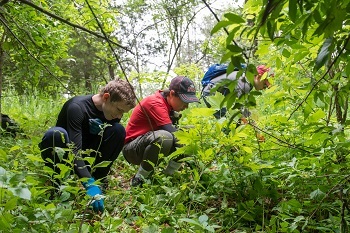
Every year, the fourth Saturday in September ? National Public Lands Day ? is the country?s largest single-day volunteer effort centered around public lands. It?s the perfect opportunity for people to devote a day to caring for and cleaning up public green and wild spaces, including parks, trails, hunting lands and forests.
Michigan?s got a lot to love, too, with an abundance of places where people can stretch out, explore the outdoors and reconnect with themselves and nature. If you appreciate these amazing resources, how about showing it with some sweat equity this Saturday? You?ll feel good while doing good!
Not sure where to start? Visit Michigan.gov/DNRVolunteers, where you?ll find dozens of ways to lend a hand. Options include:
-
Stewardship workdays: Help restore and maintain fragile, native ecosystems in more than 20 state parks across southern Michigan.
-
Adopt-a-Forest: Clean up illegal dump sites and increase awareness of recycling opportunities for waste materials found at these sites.
-
Invasive species reporting: Whenever you visit public lands in Michigan, look for and report invasive species that threaten our woods and water.
- Visit the National Public Lands Day website?for even more ways to help.
The DNR is proud to care for approximately 4.6 million acres of public lands owned by Michigan residents. These include state forests, state parks, and state game and wildlife areas. Learn more about the power of public lands.
The staff and volunteers who help maintain these public resources welcome more assistance on National Public Lands Day and all year long. Hope to see you out there!
|

This week, Michael Paling, Michigan forester with the American Bird Conservancy and a MI Birds steering committee member, shares some information about healthy and sustainable forest management practices to help recover forest bird populations.
Twenty million acres. That?s how much forest land there is in Michigan, providing habitat to a wide variety of wildlife including more than 200 species of breeding birds each spring. With so much wildlife relying on these forests, it?s important to know how forest management practices can help create, enhance and conserve bird habitat.
Forestry for Michigan Birds is a program that aims to educate landowners, professional foresters, land managers and the public about how to manage forest land in ways that benefit birds.
Forest management is one solution to help combat alarming declines in bird populations ? a 17% decrease in North America?s population of eastern forest birds since 1970, for example, due to forest fragmentation, habitat loss, invasive species and other causes. The way we manage forests can help reduce the impact these threats have on vulnerable birds that rely on quality forest habitat in Michigan and across the eastern United States.
Making small tweaks to traditional forest management practices can greatly affect the quality of bird habitat. Forestry for Michigan Birds provides information about 20 priority bird species, which represent the different forests of Michigan, along with recommendations on how to manage forest land to protect each species.
|
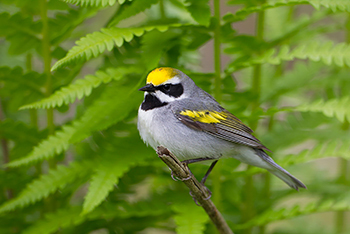
One of the priority bird species highlighted is the golden-winged warbler, shown here. This small songbird has lost 70 percent of its global population since the 1970s, and its population is still decreasing in Michigan by about 5 percent each year.
The biggest reason for its decline is loss of suitable habitat as forests age. The golden-winged warbler relies on young aspen forests, which are traditionally clearcut. Forestry for Michigan Birds recommends instead retaining five to 15 trees per acre, as golden-winged warblers use these trees for singing in the spring.
The Young Forests section of Michigan?s Wildlife Action Plan outlines some of the forest management strategies the DNR and other agencies are implementing to help conserve the golden-winged warbler and other species that use the same habitat. Learn more about the DNR?s forest management for wildlife.
Questions about Forestry for Michigan Birds? Contact Agatha Szczepaniak at [email protected].
|

Sometimes you just need to get away from it all. Away from the grind, away from the pressure, away from the noise of a world that seems louder every day. Sometimes you just need to get outdoors!
This week, Michigan Trails Week, Sept. 17-24, is the perfect time to explore one of our state?s most available, inviting outdoor options: more than 13,000 miles of designated state-managed trails, plus thousands of miles of local, county and federally managed trails and pathways, waiting to welcome you. No matter your pleasure ? a paved neighborhood path, a two-track deep in the woods, your favorite community waterway, a quiet, horse-friendly trail ? you can find it in Michigan.
Interested in sporting a bit of trails and recreation swag to support the Trails State? Check out some of the timeless gear to celebrate Michigan Trails Week, offered by our merchandise apparel partner, Great Lakes Proud. A portion of all proceeds from this collection helps preserve state parks, trails and waterways.
Questions? Contact Heather Durocher at 231-463-3512.
|

As fall foliage starts revealing its harvest-time splendor, you might be considering adding more scarlet, russet or gold to your landscaping. Did you know you don?t have to wait until spring to plant trees?
According to DNR urban foresters, fall is a perfect time for tree planting.
?Fall planting can offer some advantages,? said Kevin Sayers, DNR urban and community forestry coordinator. ?Planting in the cooler weather allows trees to establish roots even after leaves fall, and they?ll continue growing until the ground freezes.?
Planting in the fall when trees are going dormant gives new trees time to get established before the heat and drought stresses of summer. Find planting and care tips in our printable tree planting guide.
?Many trees do well when planted in fall, including conifers such as pine, spruce and fir, and most broadleaf trees,? said Lawrence Sobson, DNR urban forester.
Some sources indicate that oak trees may struggle when planted in fall, so consider waiting until spring for them.
The following broadleaf trees, well suited for urban areas, have good success when planted in autumn and provide a variety of colors:
|
-
Black tupelo: scarlet to purple leaves with navy blue berries.
-
Ohio buckeye: yellow, russet or auburn.
-
Crabapple varieties: yellow, red, orange or purple.
-
Elm: golden to chartreuse.
-
Hawthorne: yellow, orange and scarlet or purple, depending on species.
-
Honeylocust: golden-yellow.
-
Linden: golden-yellow to yellow-orange.
-
Sugar maple: yellow, burnt orange or red.
-
Sycamore/London plane: yellow-brown or bronze, with striking bark patterns year-round.

After planting, protect your new tree from the elements by giving it a layer of mulch 3-4 inches deep, avoiding the area directly around the trunk. Mulch will act as a cozy blanket to buffer the tree?s roots from freezing temperatures.
In addition to mulch, watering new trees is important, even during cool weather. Ensure that the soil has moisture for newly establishing roots by watering trees at planting and continuing as needed until the ground freezes.
If you plant a tree, add it to our community tree planting map at Michigan.gov/MiTrees.
The DNR is a cooperative partner in achieving a global goal of growing 1 trillion trees by 2030 through the global Trillion Trees campaign. To further this goal, the DNR has pledged to plant 50 million trees by 2030 and aims to inspire people across Michigan to plant trees.
Have tree planting questions? Visit Michigan.gov/MiTrees for resources, or contact urban foresters Lawrence Sobson and Kevin Sayers.
|
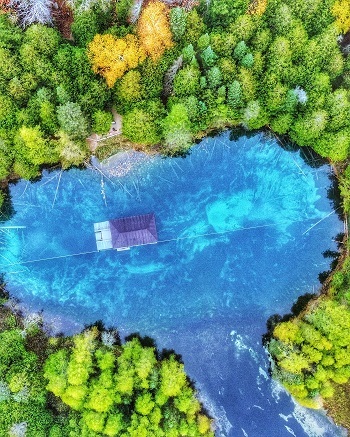
Every year, millions of people head to Michigan state parks. Some spend the day, some camp by the week, and yet others drop in for education programs or to enjoy a favorite recreation activity.
These are the folks who are most familiar with individual parks' natural features and landscape, cultural resources and recreation offerings. They also have opinions on which amenities, if added, could make for an even richer park experience.
One of the best ways to share ideas about state parks?? what they need, what they lack, what is working well?? is through the DNR's state park management planning process.?In case you missed it, there are several opportunities to learn about and get involved with current planning efforts:?
Questions? Visit the state parks planning webpage or contact DNR park management plan administrator Debbie Jensen at?517-230-6837.
|
|